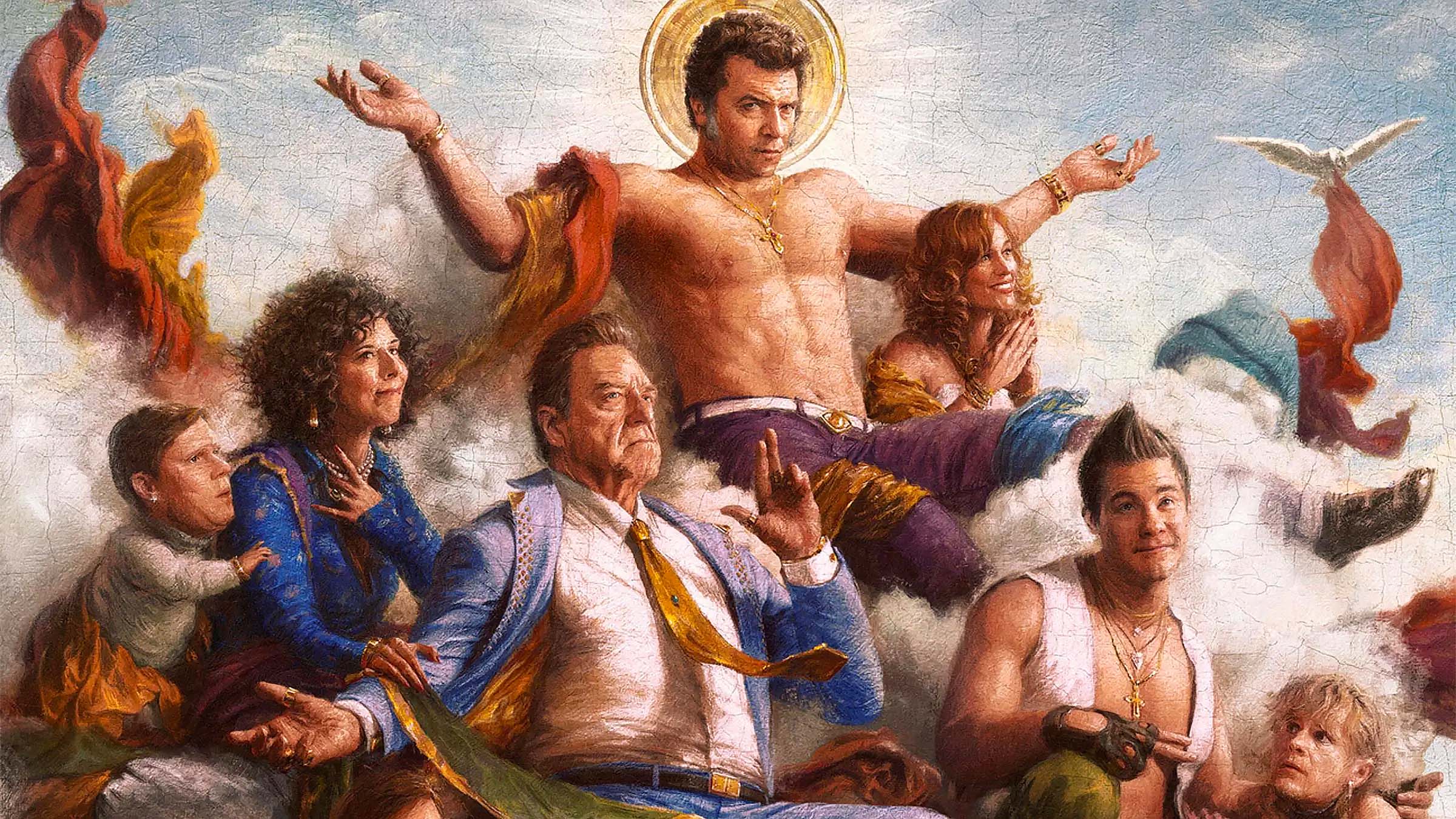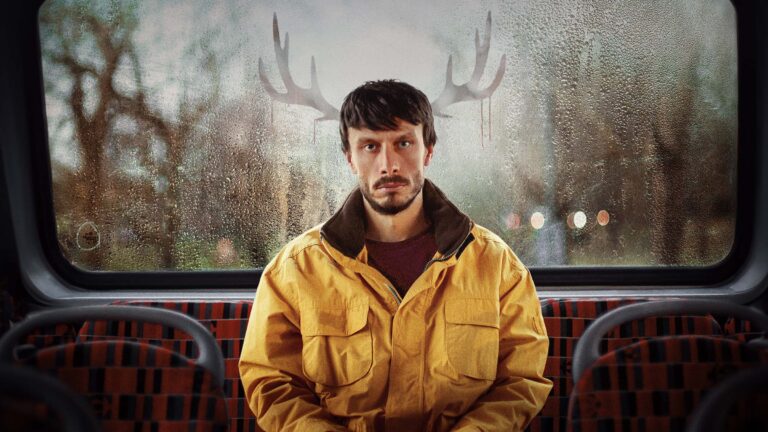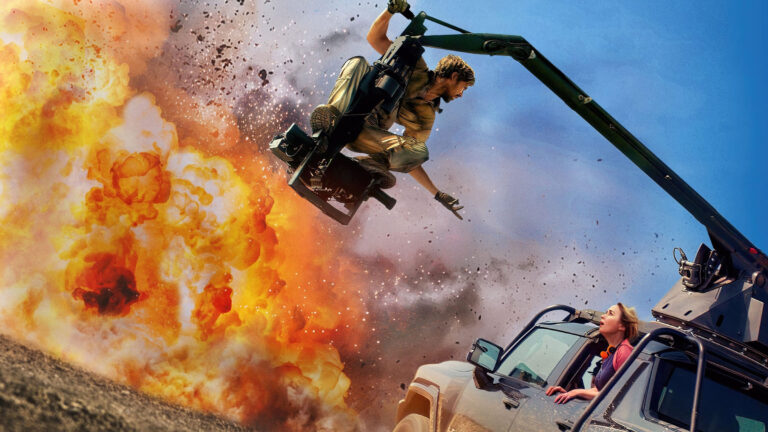If The Righteous Gemstones editors ever tire of working in postproduction, perhaps they can get a job at Cinnabon, because their cutting rooms have the unique distinction of being located in a mall. But considering how much fun the quartet has working on the show and with one another, that career change might just have to wait awhile. For now, audiences can enjoy three seasons of their hilarious work on MAX in the US.
The Righteous Gemstones are living proof that worship pays dividends in all sizes. Patriarch Eli (John Goodman), the man most responsible for the tremendous success of the family’s megachurch, is in mourning over the loss of his wife. Jesse (Danny McBride), the eldest of the three grown Gemstone siblings, looks to lead in his father’s footsteps, but finds his past sins jeopardizing the family ministry.
Next in line comes middle sister Judy (Edi Patterson), who secretly lives with her fiancé and dreams of escaping the Gemstone compound. Rounding out the dysfunctional trio is pseudo-hipster Kelvin (Adam DeVine), the youngest of the preachers and a thorn in Jesse’s side. As the family battles numerous threats to their renowned religious empire, they continue to spread the good word—and make a solid buck doing so.
Editing The Righteous Gemstones
In our discussion with the Gemstones editing team, we’ll touch on:
- Setting up shop in Sears
- Walking the tonal tightrope
- Going to editing summer camp
- Mining the gems from all that footage
- Fun with full frontal nudity
Listen while you read…
Matt Feury: I thought we should start off talking about how you got on The Righteous Gemstones. Justin, you go back to the very beginning of the show. Tell me about working with Danny McBride to create the pilot. How did you create something that would convince HBO, heretofore known as Max, to commit to making the series?
Justin Bourret, ACE: I had worked on Vice Principals, and that’s how I met Danny and Todd Zelin and the whole Rough House gang. When it came time for the pilot, Brandon James, who is one of the executive producers at Rough House, reached out to me. He said that Danny would like me to cut this pilot called The Righteous Gemstones.
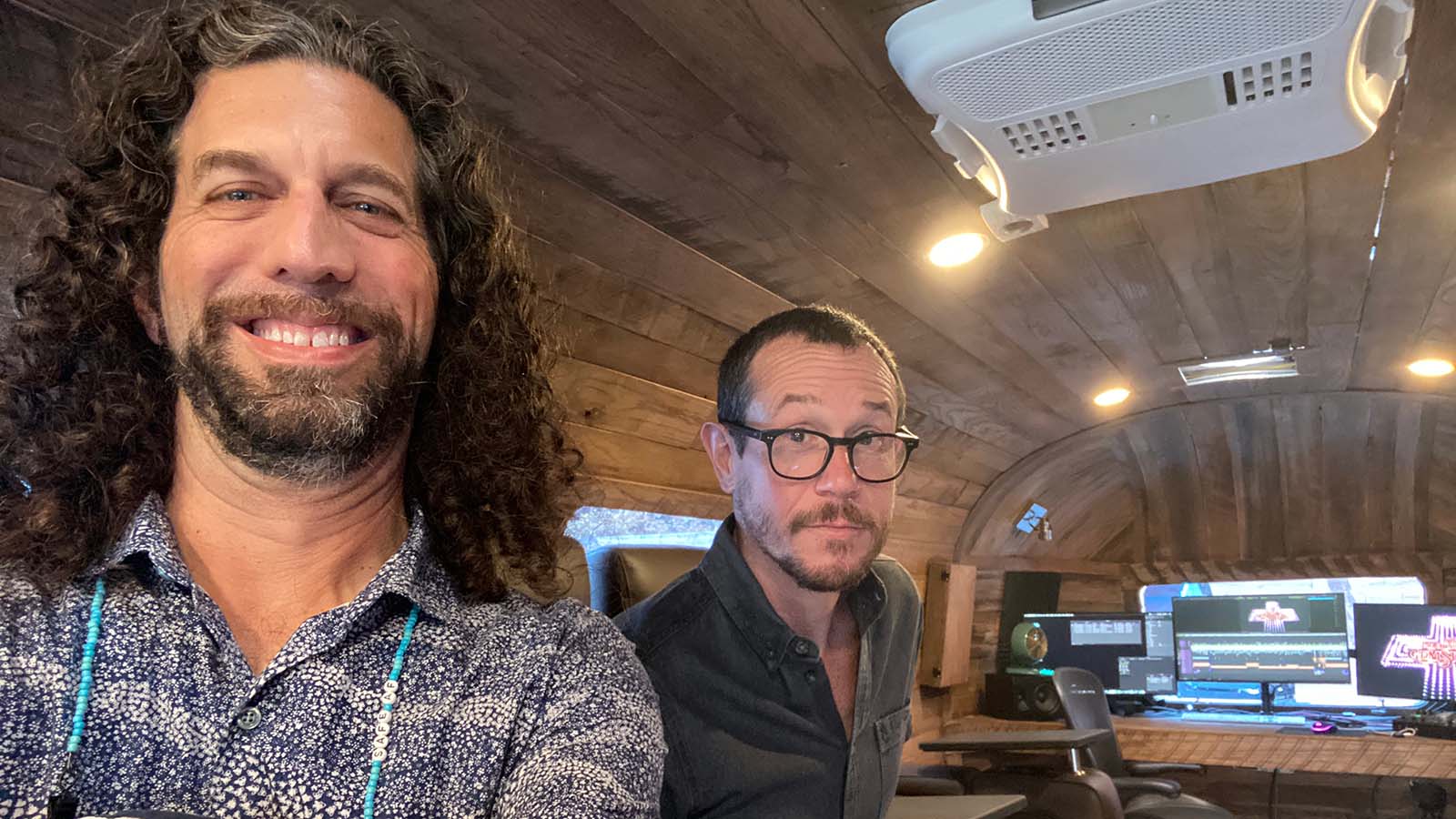
Right around that time, another show I was working on, People of Earth, got canceled after we wrote all the scripts for season three. I was available and Danny sent me the script. As soon as I read the script, I knew it was something special.
The tone that you were talking about earlier, of comedy versus drama, a love of genre, was evident in that first script that I read. The characters were so well-defined. Danny and I talked about tone and music and the direction he wanted the pilot to go. We even did a hair and makeup test trailer for HBO to sell the show. I liked the song in it so much that I put it at the end of the episode. So, we were already making decisions even before any footage was shot.
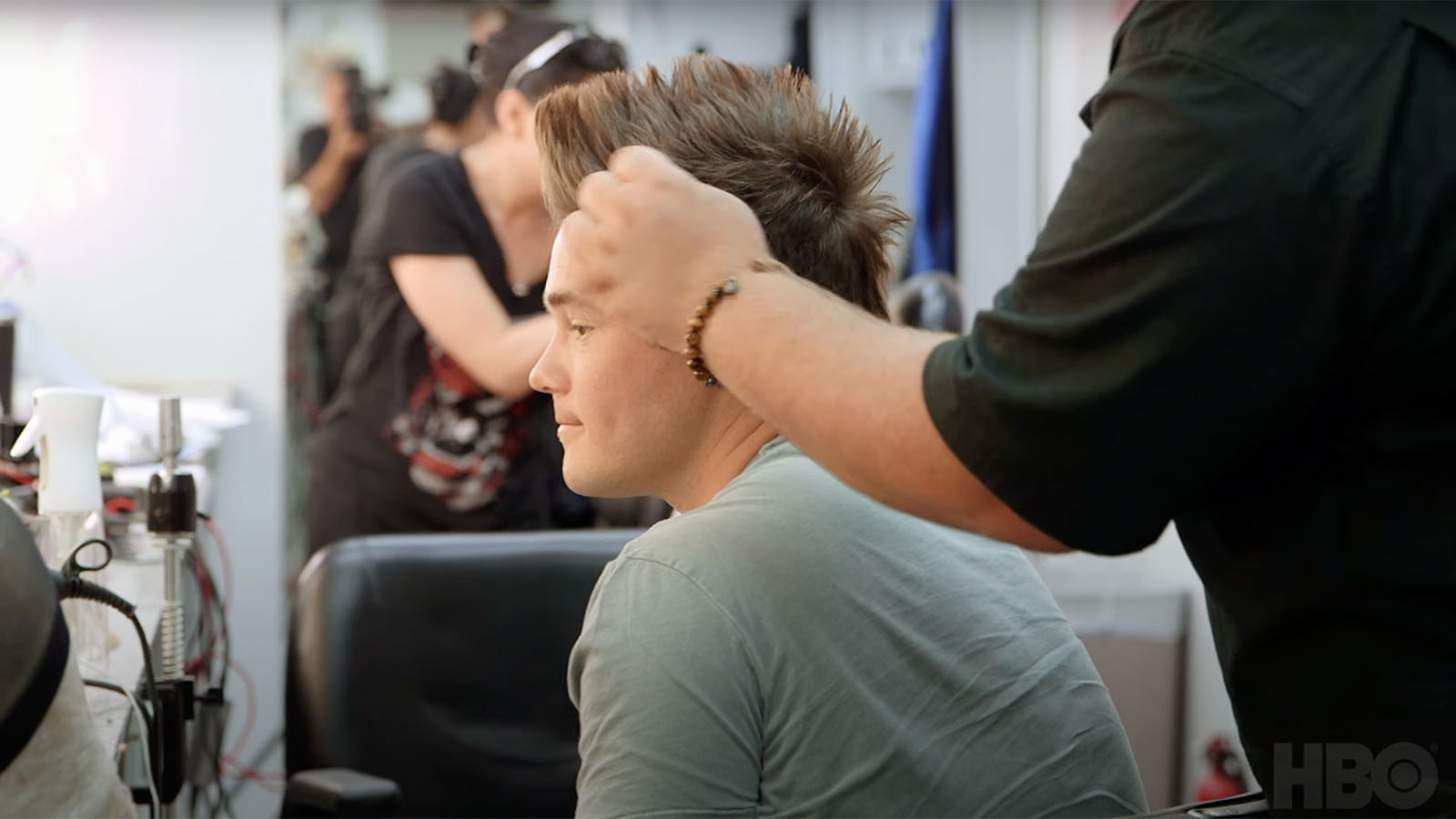
I was working with Joseph Stephens, our composer, and Devoe Yates, our music supervisor, from the get-go, so that we could have a sound for that first viewing. Danny responded really well to my first cut.
He brought up Once Upon a Time in the West, which is one of my favorite Westerns. I thought, “Oh, he loves Westerns” so I edited with that in mind. I used a lot of wide shots in the face-off scenes, just cutting between wide shots of characters. Danny and I were on the same page in terms of tone and character.
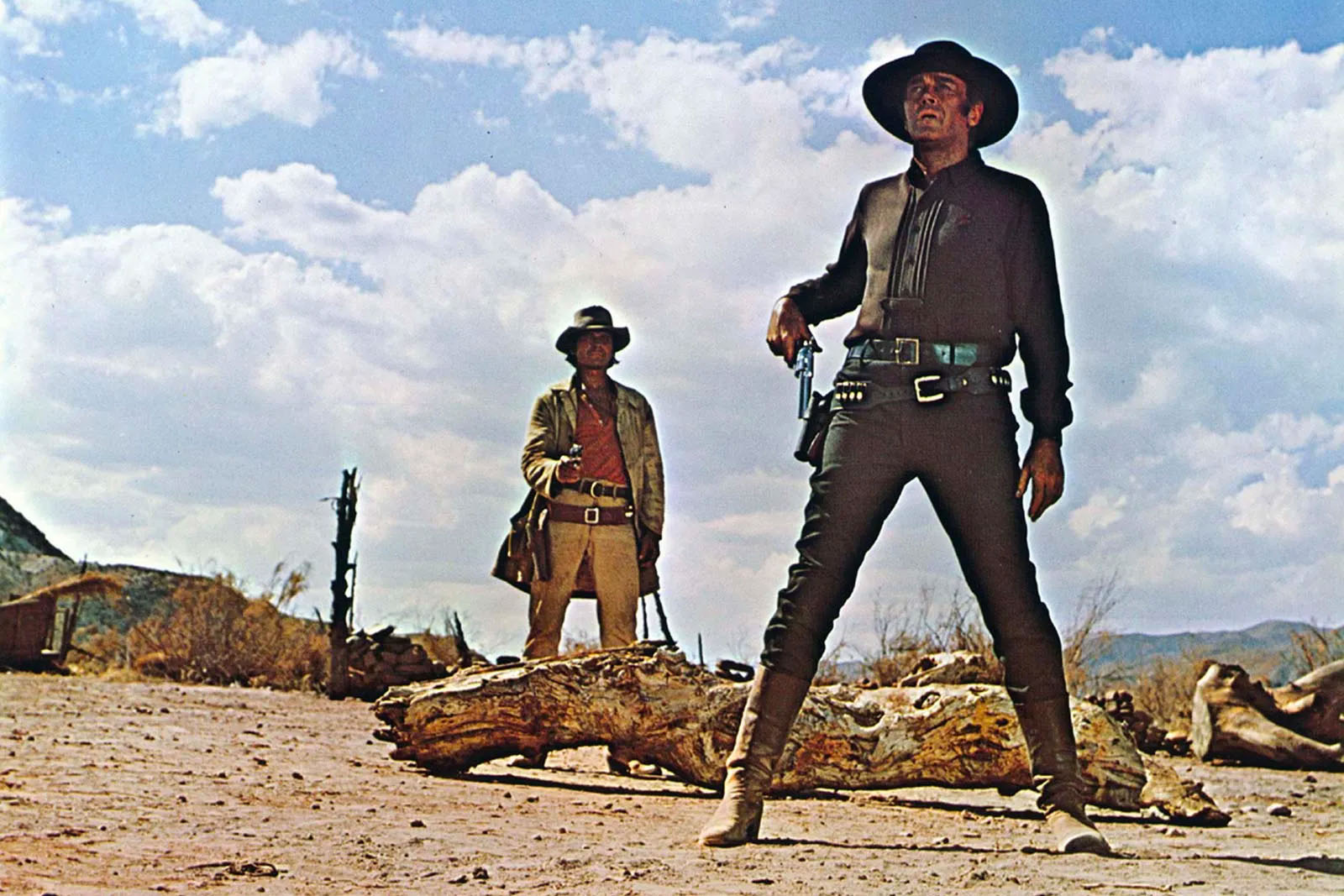
MF: Todd, you did the first episode for season three, correct?
Todd Zelin: Yes, I cut the premiere and the finale this season.
MF: One of the unique things about this series is that you have these definitive closures at the end of each season. Not a lot of shows do that. In fact, I would say most shows don’t do that.
There is always a fairly clear ending. You don’t drag that stuff into the next season. So, beyond the recap at the start of each episode, you don’t have much resetting to do for the new season.
Todd Zelin: Yes, it’s more about catching up with what they’ve been doing between seasons. It’s about getting into the space of where these characters have been, where they’re at now, their relationship to each other, their relationship to the church, and just teeing all that up.
One of the big undertakings of the premiere this year was trying to get through all of these scenes that were basically all setup. They were very funny on the page, but they needed to go from full-size scenes to what you see in the premiere. It became a montage of three or four scenes put together, catching us up.
One of the big challenges, actually, was nailing the first act of the premiere. We needed to make sure everything was fun and funny, and that we remember who the Gemstones are. Then, the rest of the episode lays out where our story is going to go that season. We’re off and running from there.
MF: Why do you suppose that Danny and company went that route? What is the philosophy behind, “We want to close this out every year?”
Todd Zelin: That’s just Danny. He’s talked about this in the press before. He feels almost cheated with a cliffhanger at the end of a season, after you’ve invested all that time in it. That’s one of the things I actually love about his storytelling. He’s willing to put a definitive end on a season and tell a full story. Then we can move on and start the next season fresh.
We carry themes over from season two to three. We might carry some character relationships over, too. Aunt Tiffany (played by Valyn Hall) and Judy Gemstone (played by Edi Patterson) are friendly now in season three. They had to build that relationship over season two.
There are little elements that carry us between seasons, but I feel like most of them are character-driven as opposed to plot devices.
Justin Bourret: Even in the pilot, Danny said that he wanted to close out each season. He wanted the main storyline to have a resolution and have it be the characters that carry us from season to season.
MF: Todd and Justin, you guys have been on the show for a while. We have a couple of new guys this season and I thought we should ask them some questions. Dave and Joseph, when you’re joining a show that’s in-progress, what questions do you ask of the team? What do you do to get yourself integrated as quickly as possible into this machine that’s already up and running?
Dave Canseco: Actually, I was an assistant on season one and for half of season two.
MF: Well, that’s cheating.
Dave Canseco: I know, I know. I’ve known these guys. I’ve been on this show forever. My learning curve was actually learning how to be a full-time editor, because season three was my first season of television in the big boy seat. A lot of it was learning how to stop worrying about where things are kept. I had to focus on tracking a story and putting a full episode of TV together.
A lot of it was learning how to stop worrying about where things are kept.
MF: Joseph, you are the actual new guy, then. Let’s hear from you about joining Gemstones and what you had to do.
Joseph Ettinger: Well, it’s intense hazing, obviously.
Dave Canseco: The beatings stopped eventually.
Joseph Ettinger: Yes, the beatings do mostly stop after a little while. That’s a good question. Building relationships with people is definitely something you have to learn as an editor when coming onto a show, especially one that’s already up and running.
That’s a big part of it for me. I love collaborating. I like having conversations in the edit room. I like talking to directors and producers and checking in as often as I can. That can be tricky during a production schedule, but the more you can check in, the better. Editors are often represented as little cave-dwelling people sitting in our dark rooms, just tapping away on keyboards. But the best, most talented, and most successful editors that I’ve known are also really good communicators.
Editors are often represented as little cave-dwelling people sitting in our dark rooms, just tapping away on keyboards.
When I was coming up, that’s something that my mentors tried to teach me. Luckily, these guys are really nice and they wanted to help expedite that process. They wanted to be available for questions and they wanted to be present. They told me, “This show is not easy to edit, just so you know! Please ask for help when you need it. Show us stuff when you need to talk through it.” I did a lot of that, especially early on.
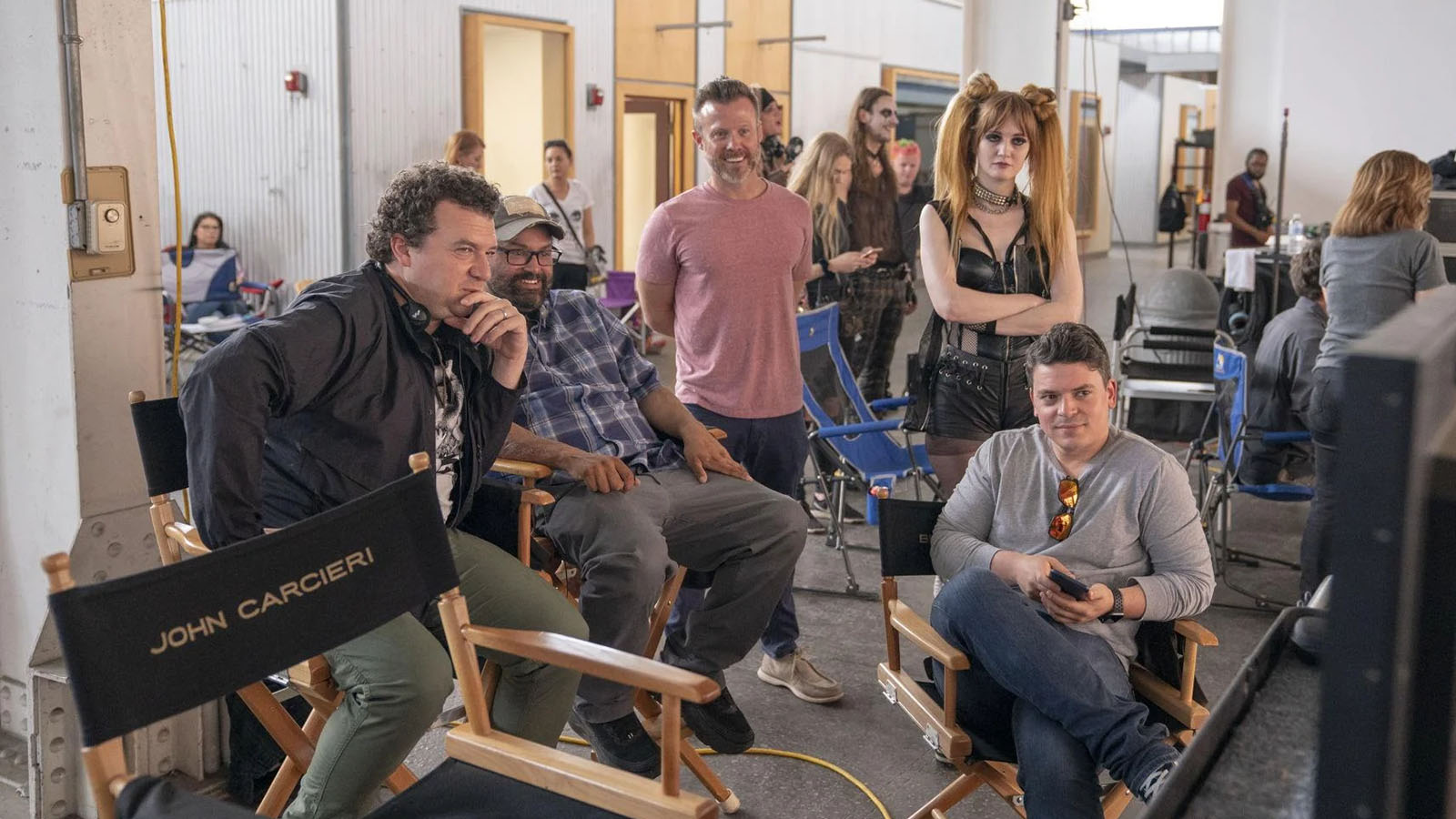
But honestly, it’s a really collaborative team. They like looking at other people’s stuff and showing each other things. They like having conversations. “Something’s weird here. What’s not working? This scene should be funnier. Am I landing the right emotional beat here? Is this what I should be feeling?” It makes the show so much better when you can work like that.
MF: What does that mean, when you say this show is not easy to edit?
Joseph Ettinger: I think this show has a really specific tone. Not to take anything away from a boilerplate sitcom—those take talent and effort to put together, too. But they have an established tone. There’s a rhythm, a stride you can hit with cutting those sorts of episodes, because you’re thinking, “Here’s the framework. They’re going to fill in different things for this.”
This show is just not like that. Both of my episodes needed very different approaches to make them tick. They had wildly different themes and jokes that they wanted to tell. They have action sequences, they have really intimate moments between characters.
I love a challenge. It helps when you have creative partners.
It was a really fun challenge. I love a challenge. It helps when you have creative partners. Doing it alone would have been a lot harder. Honestly, all three of these guys told me this show wasn’t easy to cut.
Justin Bourret: I interviewed Joseph, who knocked it out of the park, by the way. Great interviewee. I told him at the time, “This is not an easy show to edit.”
We’re walking this tightrope of comedy and every other genre, be it drama or action or horror. These guys love genre, and you can see it in the show. Even the pilot ends with a oner of Jesse running over one of the bad guys and then going back and running over the second bad guy, twice. It’s darkly funny. You’re laughing at it.
Then you get to a scene with Eli Gemstone (played by John Goodman) watching Aimee-Leigh (played by Jennifer Nettles) on a past TV show, and your heart’s ripped out. You’ll have a very funny scene, even if it’s a dark comedy, and on a dime you could be crying or feeling some other sort of emotion. The naked fight in Joseph’s episode is a great example. That’s what this show is all about. It’s hilarious and gets darker, but still hilarious. Then you get home with Judy and it’s devastating.
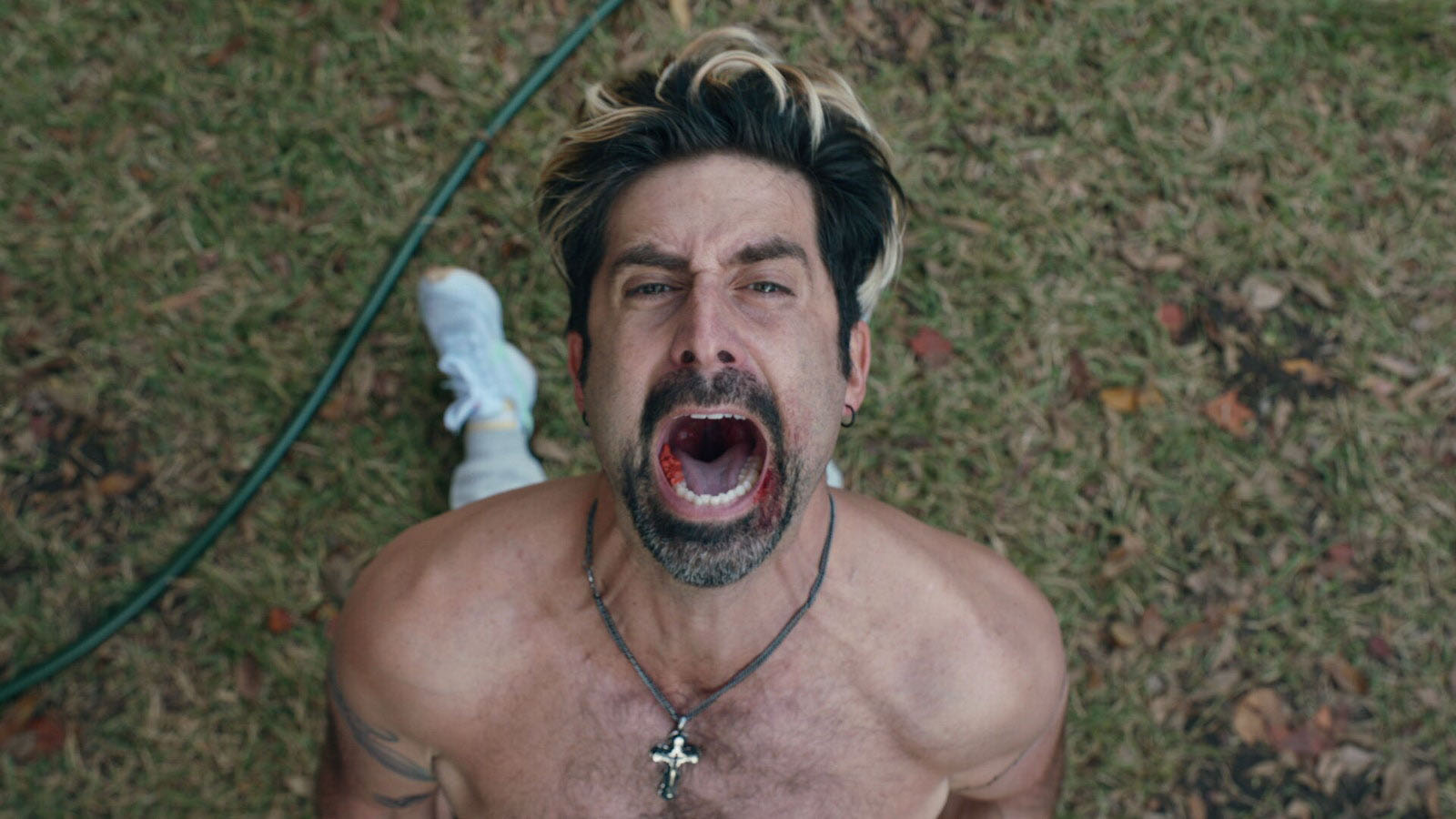
MF: We’ll talk about the naked fight. Just be clear, that’s in the show? That’s not behind the scenes?
Todd Zelin: It wasn’t part of the hazing.
Dave Canseco: You don’t know that.
Todd Zelin: I was so jealous when I saw that Joseph was getting that episode.
Joseph Ettinger: He started bartering.
MF: Moving on. The show shoots in Charleston, South Carolina, in an abandoned mall. Are you guys editing on location? And if you are on location, is it near the food court?
Justin Bourret: It’s on the other side of the mall. You can get to the food court.
Todd Zelin: It’s good, though. You burn some calories on your way to the food court.
Justin Bourret: We are in the Sears husk.
Todd Zelin: The Sears that Baby Billy (played by Walton Goggins) works in during season one is the Sears that the production is based out of. Our edit rooms are in there. There’s also soundstages built there and basically all of Eli’s house interiors are in there. Jason’s Steakhouse interiors are in there. They’ve taken over the entire anchor store of that mall.
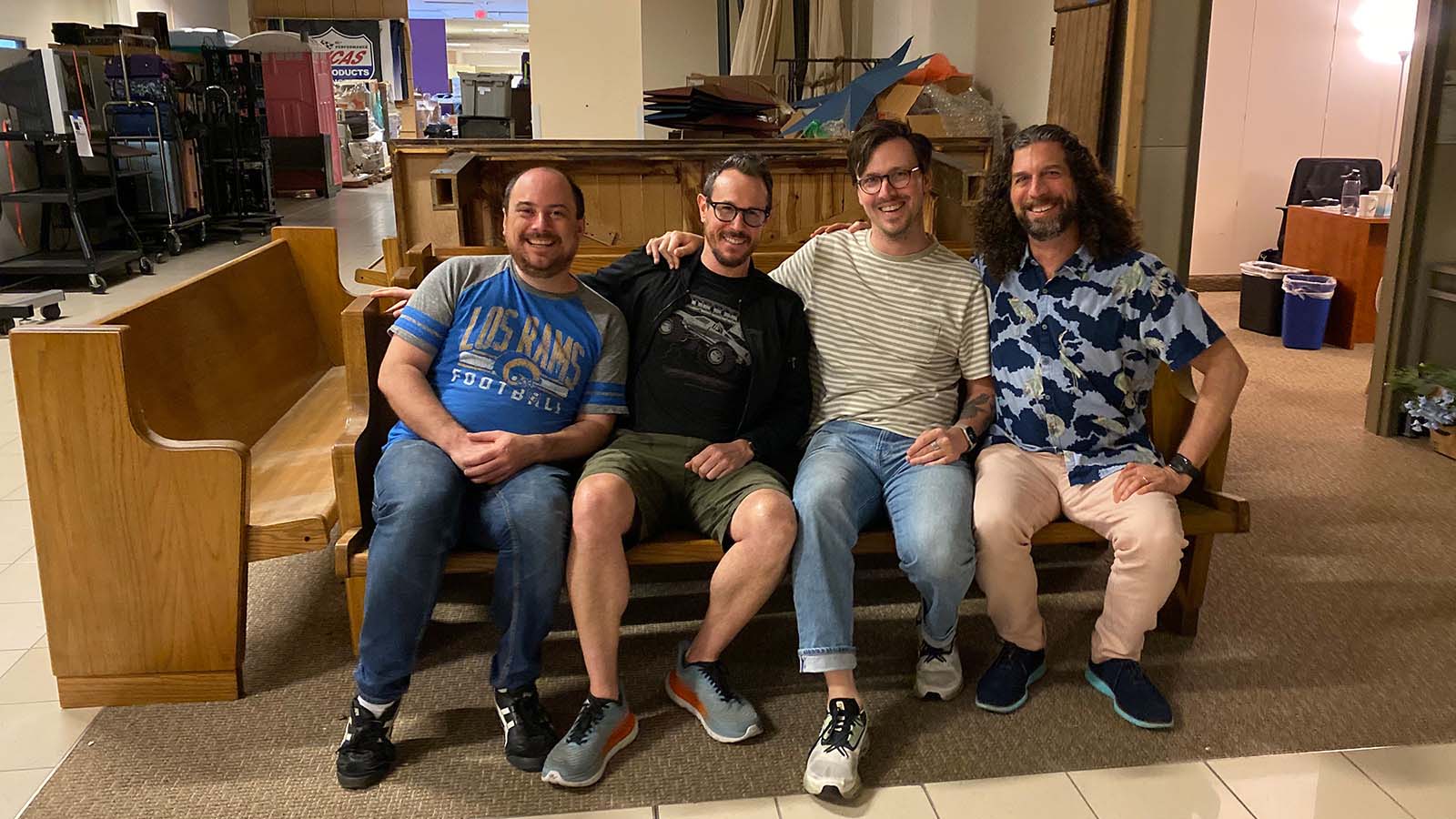
Joseph Ettinger: It’s half the mall at this point now.
Justin Bourret: There’s still swag from Sears inside.
MF: Is that what they give out to the crew at the end of the season?
Justin Bourret: Exactly.
MF: How do you feel about that? I’ve talked to editors that like to be close to production, just for the camaraderie and the ability to get certain answers at an accelerated rate. Then there are others who say, “I don’t want to know how this day was or what went into that shot. I want to be able to make my choices creatively devoid of any pain that might have happened while making that shot.”
Todd Zelin: I tend to isolate myself from production as much as I can. I generally reach out to the directors or ADs via email or text. I try to stay away from the set. I always feel like I’m out of place there, because I am. I’m an editor. There’s no place for me to go. I always feel like I’m in the way.
Also, there’s only so many days that they actually shoot in the Sears. So much of the filming happens around the Charleston area. Really, when they’re only at the Sears when they’re shooting on those specific sets. Usually they’re out and about.
The entrance to the Gemstone Prayer Center (previously Sears in the Citadel Mall).
Joseph Ettinger: I’m the opposite. I like to be as close to production as possible. I like being able to ask questions. I like the energy of it as well. It’s fun to meet people from other departments whom you wouldn’t otherwise have an opportunity to interact with as an editor.
That’s the part of what bums me out about editing. Sometimes I want to meet and converse with the broader community that made this project happen. What was hard was being in Charleston when all of us are from Los Angeles. Living out there was a challenge just because, “Oh, I guess I live in another city across the country.”
Dave Canseco: It’s like editing summer camp, just out there living the life of the show and that’s pretty much it.
Justin Bourret: For a location, Charleston’s pretty amazing. I was more hybrid this season. During season two, because of the pandemic, my wife and dogs were able to come out. But I was out there the entire season. I was in Los Angeles for the first half of this season. I would go out on hiatuses to work with directors and Danny and the gang. Then, starting in November, which was the last block, I went out to Charleston full-time until we wrapped.
MF: Beyond the Gemstone family themselves, you have this fairly big B-crew of supporting actors. You also have guest stars each season that are critical to the story arc. You even managed to cram Joe Jonas in there for season two. Does any of that translate into being a challenge, story-wise?
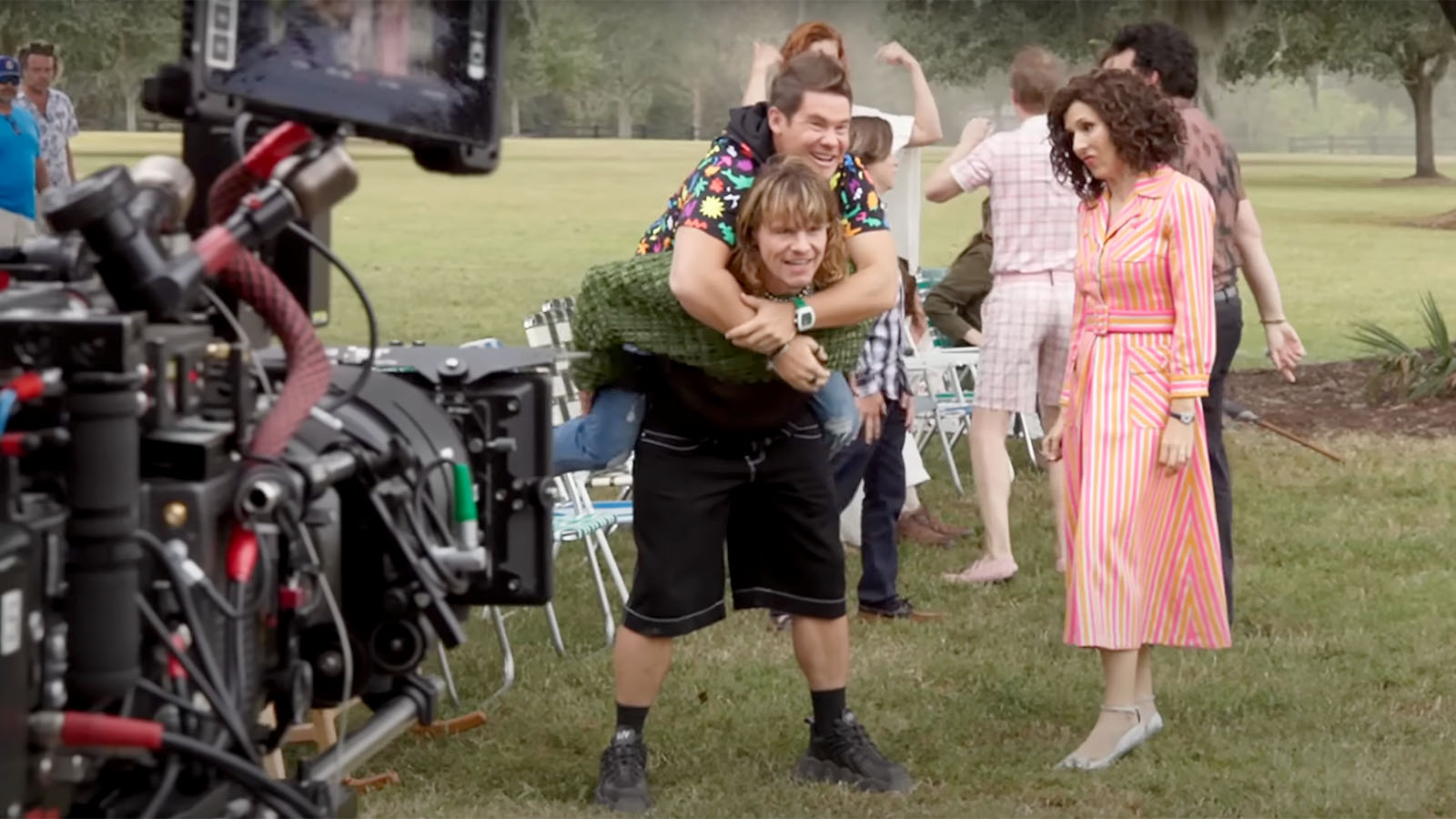
Justin Bourret: They put a lot of work into the scripts. It’s like any show, nothing’s ever going to be perfect in the first cut. That’s just a given. But I’ve never really had a problem with the characters. Sometimes, we may want to take out a scene because we want to get to a character beat sooner, but I feel like everything is really well-organized in the script stage.
Todd Zelin: The scripts are hilarious and really well-organized, and the story really is all there. But the scripts are always much bigger than what the show ends up being. I don’t mean that we’re losing set pieces or anything, but we sometimes have to take scenes that were three pages long and cut them down to a page and a half in the final edit.
The challenge there comes down to, “Here’s the scene. I know what it’s supposed to do, because I have the full version. Now, how do I make this efficient and keep it funny and keep all my character beats?” I have to make sure that somebody gets what they need out of the scene, or doesn’t.
Our job is to get to the essence and the core of what the scene is while keeping all the funny pieces going. It is a little bit like spinning plates. But the ultimate goal is to get down to what the essence of the scene is and what it’s supposed to do in the larger story.
Story and character. It all comes down to that.
Justin Bourret: Story and character.
Todd Zelin: Story and character. It all comes down to that.
Justin Bourret: The difficult part of editing this show is that they shoot the episodes like a feature. Todd said every week, “We’re doing a mini feature.” That means you’ve got a lot of footage to go through while on a TV schedule. You’re getting a lot on your plate this season.
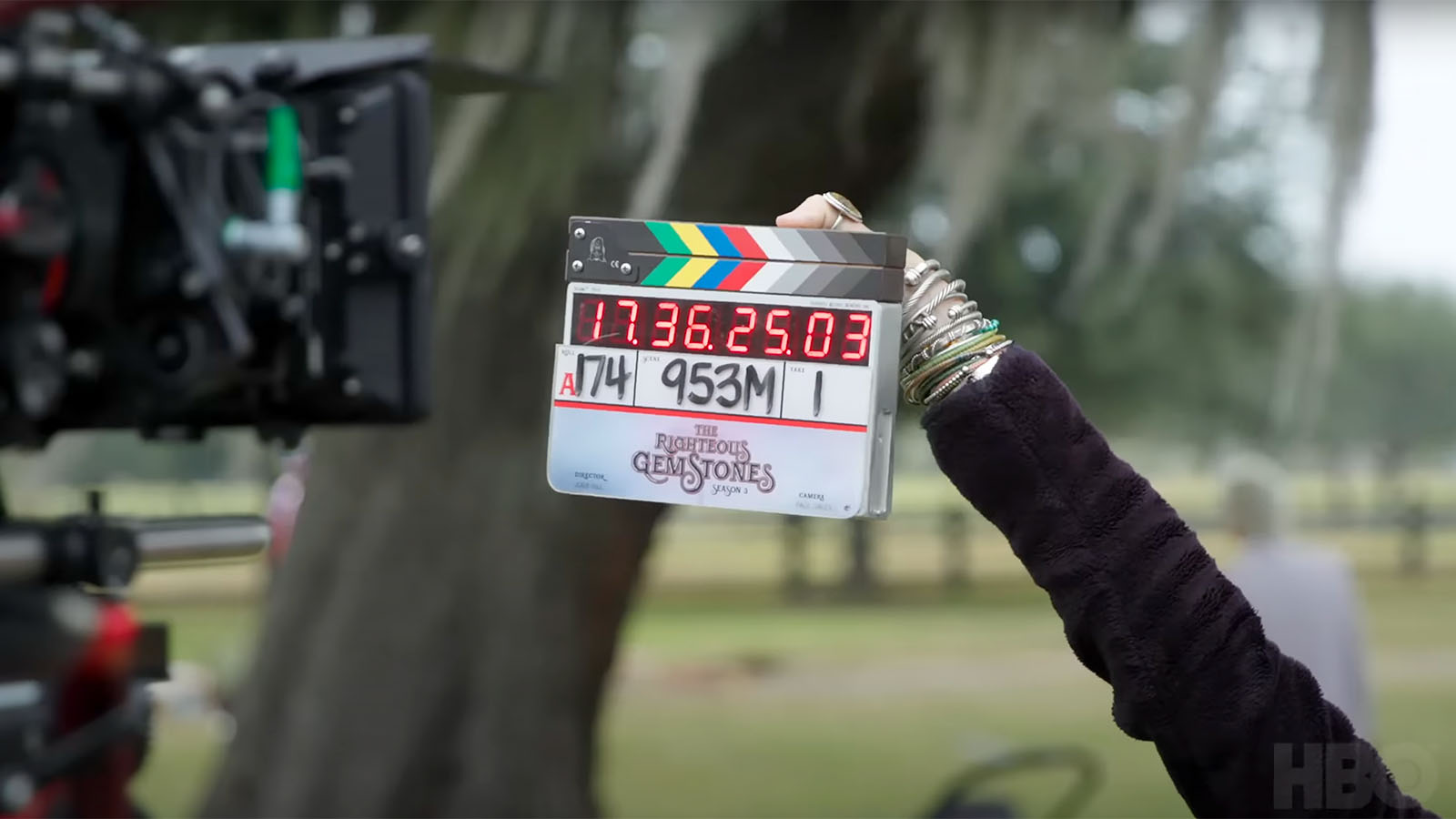
We cross-boarded a lot, so I had to work to keep track of, “What episode am I doing right now?” and “What’s going to happen later?” You have to keep track of story and character as well, so you’re not giving something away too soon.
MF: Something that can’t be trivial to work on are the musical numbers. I didn’t want to overlook that. In addition to the comedy and the action, you have actual musical numbers, which can be like action sequences unto themselves. What is the production-through-post workflow for something like that?
Dave Canseco: A lot of it starts with organizing everything. We build big multigroups for these musical numbers, usually syncing all the songs so you can cycle through every camera angle of every take and make sure that you can get that part of the song. With the musical numbers, it’s just laying it all out, finding your angles, and then really trying to tell the story.
Justin cut Baby Billy’s musical scene. He could probably tell you more about it. It’s really about telling the story through that song. It’s about selling what Baby Billy is going through in that moment and what he thinks he is versus what is actually happening.
Justin Bourret: My assistant for the last couple of seasons, Sarah Wall, is also the lead assistant on the show. She manages all of the systems and makes sure the train gets to the station on time. She does an awesome job. But what Dave said, she gave me a big multigroup.
In the script, the scene was just, “Baby Billy sings at a pool and no one’s paying attention, and a guy does a cannon ball at the end.” That’s basically what it says in the script.
Todd Zelin: That’s how most of the montages are, by the way.
Joseph Ettinger: So many musical numbers are like, “Judy sing sings a song” and then you get a day of footage.
Todd Zelin: Or, “The Gemstones walk into Jason’s Steakhouse” and then you get hours upon hours, multiple cameras running at the same time, of these ridiculous shots of them that get montaged into this massive, epic thing.
Justin Bourret: Danny did this cool thing. He said, “I want to just do this musical-type thing where Baby Billy is in his head and he’s singing to the camera” and they shot all in these different locations.
Once I saw that, the whole sequence clicked for me. I started by having it sound like a sound system at the pool. Then, once he started talking to the camera, I played it like Singing in the Rain, a musical, where any background noise is out and it’s full-on quality music. I thought the studio was going to say, “Let’s trim this song down” but they had no notes on it. I guess it worked.
MF: You’d be surprised how often the discussion comes back to Singing in the Rain on this podcast. It’s true. The other big element for the show, clearly, is the scale of the action. Car chases, gunfights, crashes, explosions. What is the VFX process for Gemstones? Where does the lion’s share of it really go? Do your efforts mostly go to those larger in-your-face elements? Or are they in hundreds of little things that are not meant to be seen?
Todd Zelin: It’s kind of both.
Joseph Ettinger: It’s everywhere. This is a very VFX heavy show. Every season we have a flashback episode and that ends up being the biggest VFX episode.
Todd Zelin: And that one flashback episode gets shot first. We’re actually shooting episode five at the beginning of every season so they have time to do all the de-aging with John Goodman.
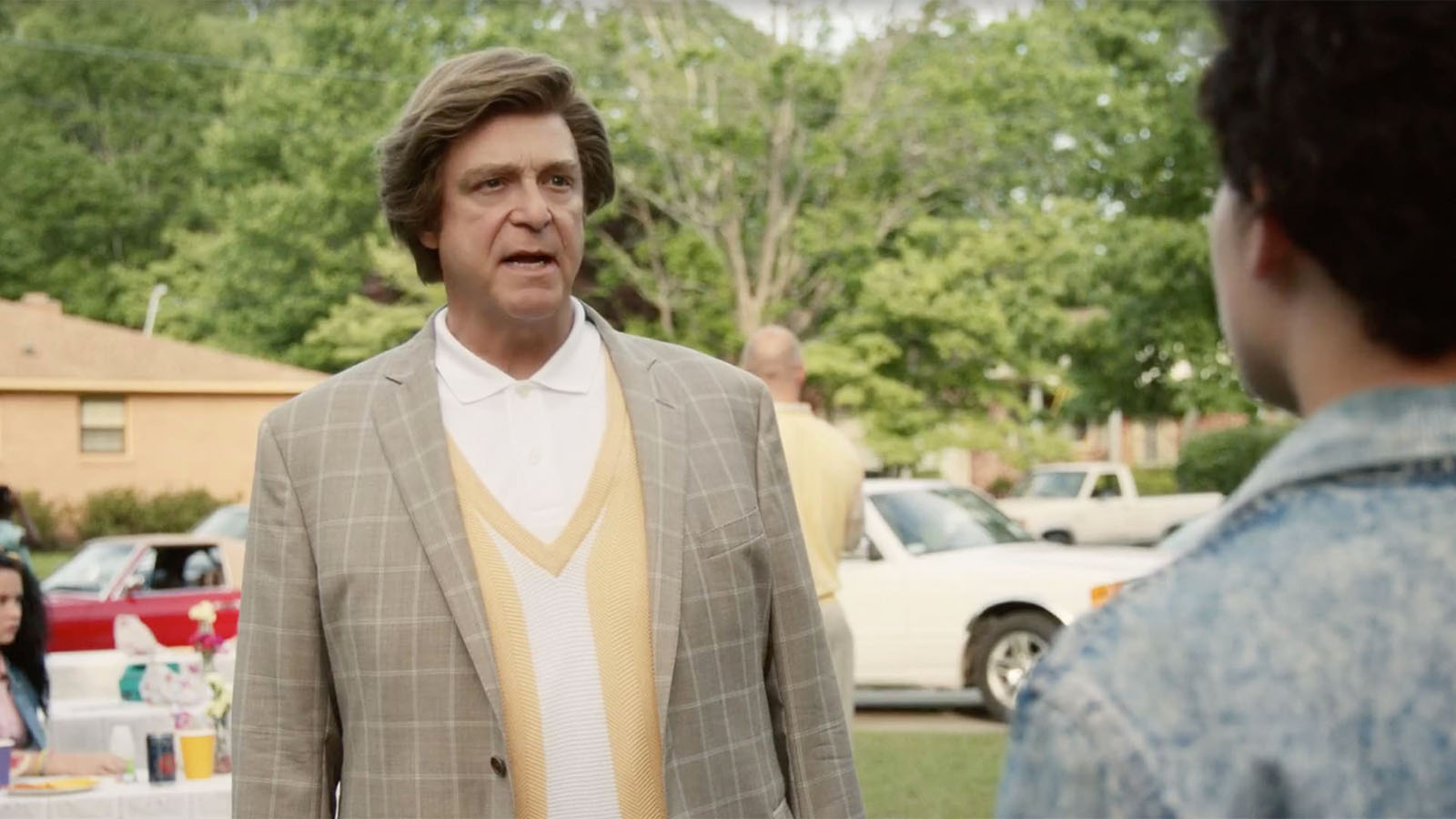
Justin Bourret: It’s actually nice. I love the interludes because they not only show you what the family life of the Gemstones was like back then, they also give you some clues about why characters are acting the way they are in the current season.
In season two, I think knowing Eli Gemstone’s secrets helped John Goodman understand the character even better. I remember when Todd got a sequence between Eli and Junior (played by Eric Roberts), he ran in and said, “Wow, John is totally nailing the scene. I think he’s playing it like he wants to tell Junior what he did, but he can’t.”
As far as visual effects, Bruce Branit is our visual effects supervisor and he’s on set to make sure we get everything. There’s definitely visual effects in all the big sequences. As far as the church goes, we only have extras in the front rows, so anything in the back, that’s doubling up.
Todd Zelin: In season two, we did a lot of CGI crowds just because of COVID. Then in season three, when those regulations started easing up a bit, we were able to get more. I believe they shoot plates, where they’ll move the audience from one section to the other in the stands and then they stitch them all together. I’m not sure how many CGI crowds were in season three. I think they mostly did it with VFX plates.
Justin Bourret: As far as de-aging goes, it’s a group effort. Makeup and hair are doing their part. There’s still a lot of work, but they aid the visual effect process of de-aging. We’ve got great vendors. Screenscene does our de-aging in seasons two and three.
MF: De-aging aside, are you doing a lot of temporary VFX? Do you do a lot of intra-frame editing with animatte and fluid morphs?
Dave Canseco: We have an express rule on the show that fluid morphs are forbidden. Sorry.
MF: How dare you!
Todd Zelin: You have to get special permission.
Dave Canseco: I snuck one in this season and I felt like I broke the law.
Justin Bourret: My rule is, if I can see it, it doesn’t go in. If it gets by me, okay, you can have it.
Joseph Ettinger: I do animattes pretty regularly. Usually I’ll do a quick temporary mockup of it and have my assistant do the clean version.
I was also lucky. My assistant, Eric Ellington, is really great with visual effects. He was really instrumental in doing the hologram stuff. He was a huge part of making sure that was delivered in temp in a way where the producers and Danny could see it. Not to look at it and say, “Oh, we’re done” but to look and start thinking about how cool it’s going to be.
Not to look at it and say, ‘Oh, we’re done’ but to look and start thinking about how cool it’s going to be.
Sometimes you put things in front of a showrunner and they say, “We may have a problem here.” You’re trying to avoid that with those temp visual effects at all times. You want things as cleaned up as possible when you present to Danny, because when you screen for him, he’s not a backseat driver.
When we screen things for Danny, we’re always trying to put our best foot forward. That includes really polished temp VFX. We put stuff together so he can get excited about what it’s going to look like instead of thinking, “Are we able to make this work?”
Todd Zelin: The goal is to get all the scenes as realized as possible. Even if you don’t have, say, the right piece of music, you’ve made a choice for a reason. You’re not just putting something in there.
When we screen, I like to think that we’ve done everything that we can to make it as polished as possible. We don’t want all the temp things to be a distraction. It is easy to get distracted by things that aren’t perfect.
Justin Bourret: We have a great post team, a true family. We all watch the episodes together in the room. Everyone helps out in these situations as well, trying to find stock footage. Bruce and his visual effects team will sometimes give us mocked-up visual effects to aid the process.
MF: In the middle of each season, you do an episode called the Interlude. I think, Todd, you said you do that one first, because that’s the most demanding.
How long does an episode of Gemstones take on average? How does that compare to that Interlude episode? Is the Interlude longer just because of the visual effects that go along with it?
Todd Zelin: Honestly, season three was so cross-boarded that I don’t know how many days we had on each episode. Every day, the crew would be shooting something for the premiere in the morning, break for lunch, and then they’d shoot something for episode six and eight in the afternoon. It was that piecemeal.
Gemstones started later in the year, so we began to have conflicts with actors and availability. Justin, you might have a better idea because you actually talked to production.
Justin Bourret: We had a good number of days just because they were big episodes and a lot happens in each of them. They’re on location, too. As far as having the Interlude first, again, that was so we could have more time with the de-aging, because it takes a while.
They also shot the chase in episode two early so we would have time to get that in the right spot. It’s more about sequences. If there’s a big set piece, they may shoot that first just so that we have a little bit more time to deal with visual effects.
As far as Sanctuary, there’s a specific time of year that we can get the Coliseum, and I think it’s July. We have to shoot all those scenes then.
North Charleston Coliseum and Performing Arts Center is a primary location for The Righteous Gemstones.
Joseph Ettinger: That’s so we don’t shoot in the middle of a hockey game. Actually, we kicked a minor league hockey team out of their stadium during season two, because we had it booked.
MF: The show is hysterical, but you can take all the comedy out and what you have left is The Godfather, Sopranos, Succession. Are there points of reference that Danny gives you?
Justin Bourret: Yes, and the directors as well. They’re big lovers of movies and TV. In the chase, for example, I think Jody Hill brought up Baby Driver. For the end montage of season two, they brought up the baptism scene in The Godfather, which I could totally see. When they bring examples like that, it helps inform how you’re going to edit the scene or the sequence.

Joseph Ettinger: They brought up Magnolia for the locusts, at the end of episode nine. You get reference points sometimes, but I also think that’s only part of it.
Danny’s not sitting there with us and looking at every take. Instead, the notes we’ll get on scenes are, “I want this to have more of this kind of energy.” It’s a mixed bag when it comes to how specific the notes are going to be. You may get a movie reference, but you also might just get a vibe.
We take that and then all of us sometimes sit together and think, “Okay, what does this actually need? How are we going to get there?” and you go in your room and try to make it work.
Dave Canseco: You throw stuff against the wall until it sticks.
Todd Zelin: Danny gives us a really wide berth of creativity, really. He wants us to come in with any and all ideas. You might get shot down. There are plenty of times when you think X, Y or Z is going to solve the problem, and then, for any number of reasons, your idea ends up not working. But Danny wants to see the creativity.
He wants us to take stabs at scenes that maybe aren’t working and re-work them structurally. He really encourages that. I think you can see that attitude across all the departments.
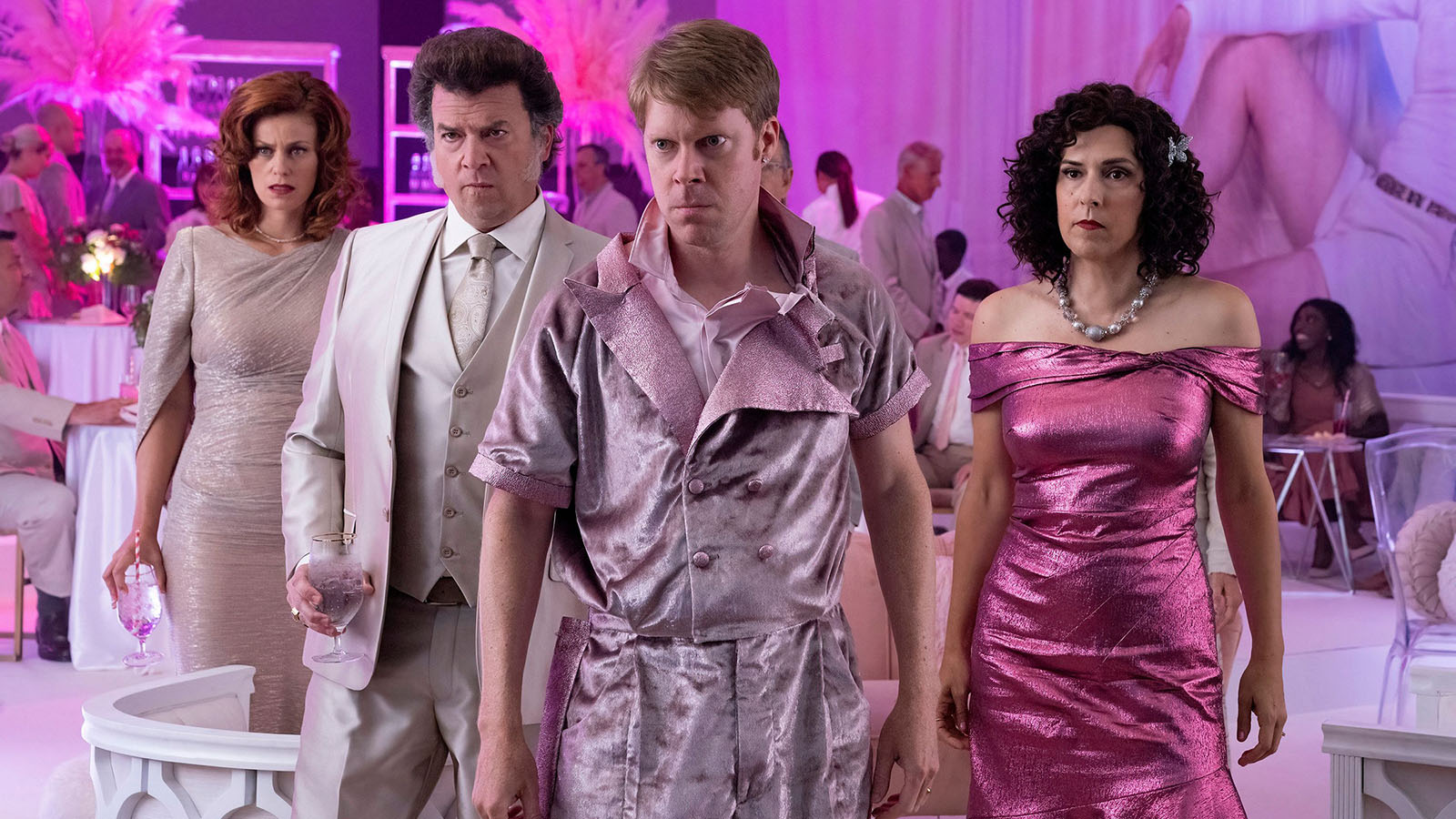
Take the costuming, for example. Sarah Trost started as our costume designer, then Christina Flannery took over. Look at how creative and outrageous those things get. The production design by Richard A. Wright is incredible, too. That’s all because there’s a freedom that we get as creatives to really come at the material. If we have an idea, we feel safe enough to go after it.
MF: Joseph, I was sure you were going to bring up The King of Queens.
Joseph Ettinger: That’s just me. Whenever I’m editing, I always have episodes of The King of Queens on a loop. I just watch the seasons over and over again. All my editing is based on The King of Queens.
Dave Canseco: That’s the Rosetta Stone for Gemstones, actually, if you want to break it down. It’s just The King of Queens.
MF: Every editor has their thing. You can’t help but wonder, skilled as they are, how the actors deliver some of these lines without breaking, because they’re just so over-the-top and so crazy. Can you give me an idea of the amount of takes you’re getting in these heavy, comedic dialogue scenes? For example, the after-church meals look like they would be a nightmare to cut.
Dave Canseco: You are entirely correct.
Joseph Ettinger: That was one of the first scenes I got. I was new on the show, and the first big scene I get is a Jason’s Steakhouse scene. I was looking through the dailies thinking, “What is this? What am I looking at?”
Justin wasn’t out there at the time. I had some phone calls with him, though. I remember walking into Todd’s office and saying, “Help? What should I look at as a reference?” I ended up watching the old Jason’s Steakhouse scenes over and over and over again. That’s part of the challenge of the show, though. They give you a ton of footage. You have every angle to work off of.

Todd Zelin: Every time you see a shot on screen, there’s two other cameras that are associated with it. You’ve got multiple eyelines happening at once. You’ve got two-shots, three-shots, four-shots down the table, wides of the table, moving wides of the table, and then they’re delivering different improvs and different lines.
Dave Canseco: Those Jason’s Steakhouse scenes are the ones they improv the heaviest on.
Joseph Ettinger: But the actors crush it. The actors crush it. They work so well together and off of one another. You get those scenes and you might think that, if they’re improving, or if things get a little looser, that it’s going to turn into chaos. But, somehow, they manage to keep it together, and you end up with pretty cohesive footage, considering.
Justin Bourret: Those are definitely the scenes where the actors are going to break and laugh a little bit more, just because they’re a family. They’re all a true family of coworkers and they’re having fun with each other.
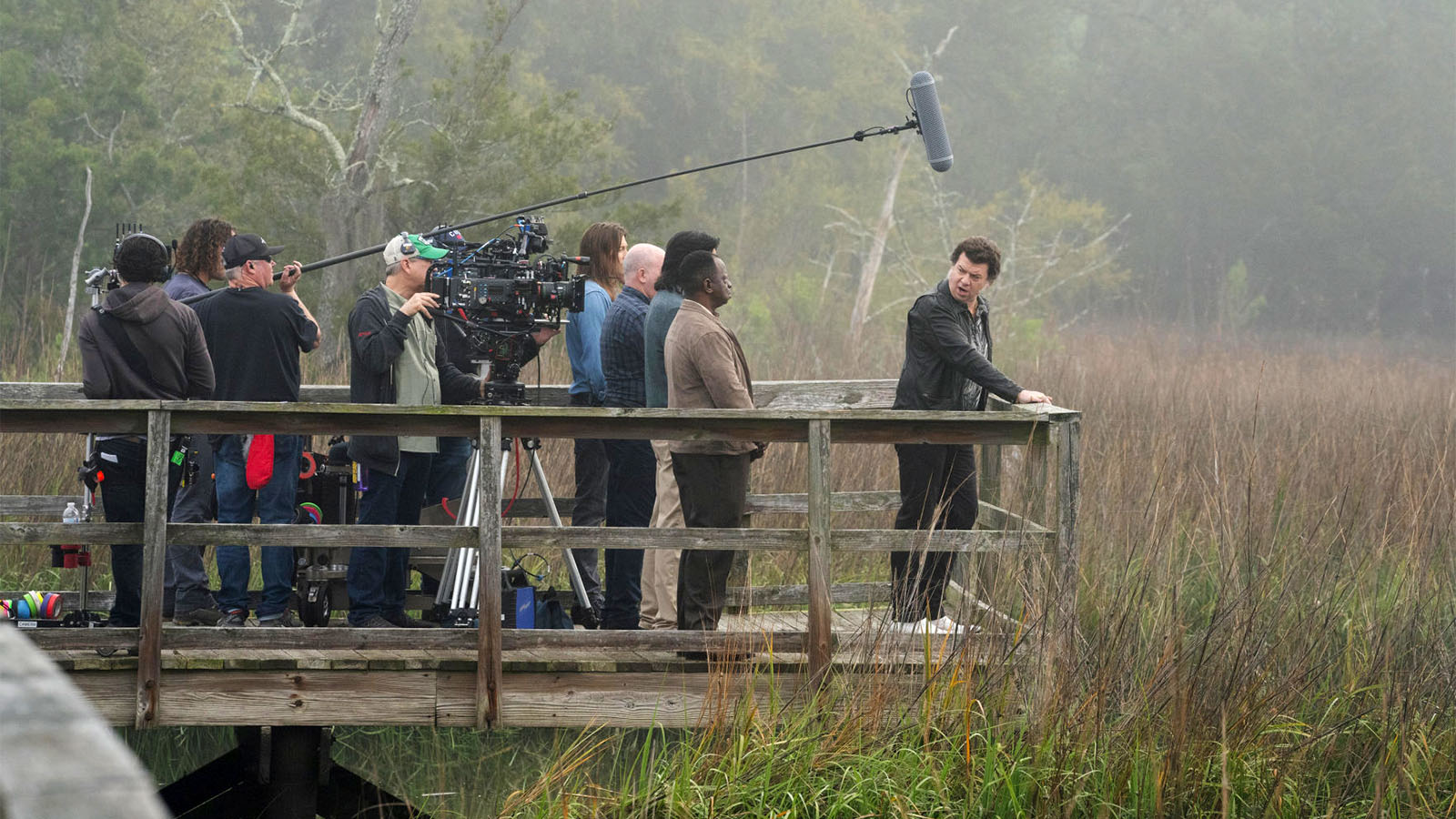
In the pilot, Edi Patterson definitely goes to town. I remember her doing some bit of improv and it was great. Unless you’re looking for it, you can’t tell that it’s improv. But you can see Danny’s shoulder, because it was an over-the-shoulder shot, and he’s kind of shaking a little bit. That’s because he’s laughing.
Todd Zelin: Those scenes are intense, too, for the actors. That’s a twelve-hour day. That’s a full day to do the Jason’s Steakhouse scene. They get punchy by the end. Weird stuff gets said, and it’s about just going through the footage and figuring out what’s the funniest. What’s making us laugh the most? What’s best for the character in that moment of the show?
Justin Bourret: The Prince Eric stuff in season two was all Tim Blatz and Edi. They just did that Disneyland stuff on their own.
MF: I’ve heard that some editors will start cutting with the last takes, but if you’ve got a twelve-hour day and the actors are getting punchy, maybe you can’t do that. Do you guys have an approach that gets you to where you want to be as quickly as possible?
Dave Canseco: You have to watch everything on the show. There’s just so much that you could miss.
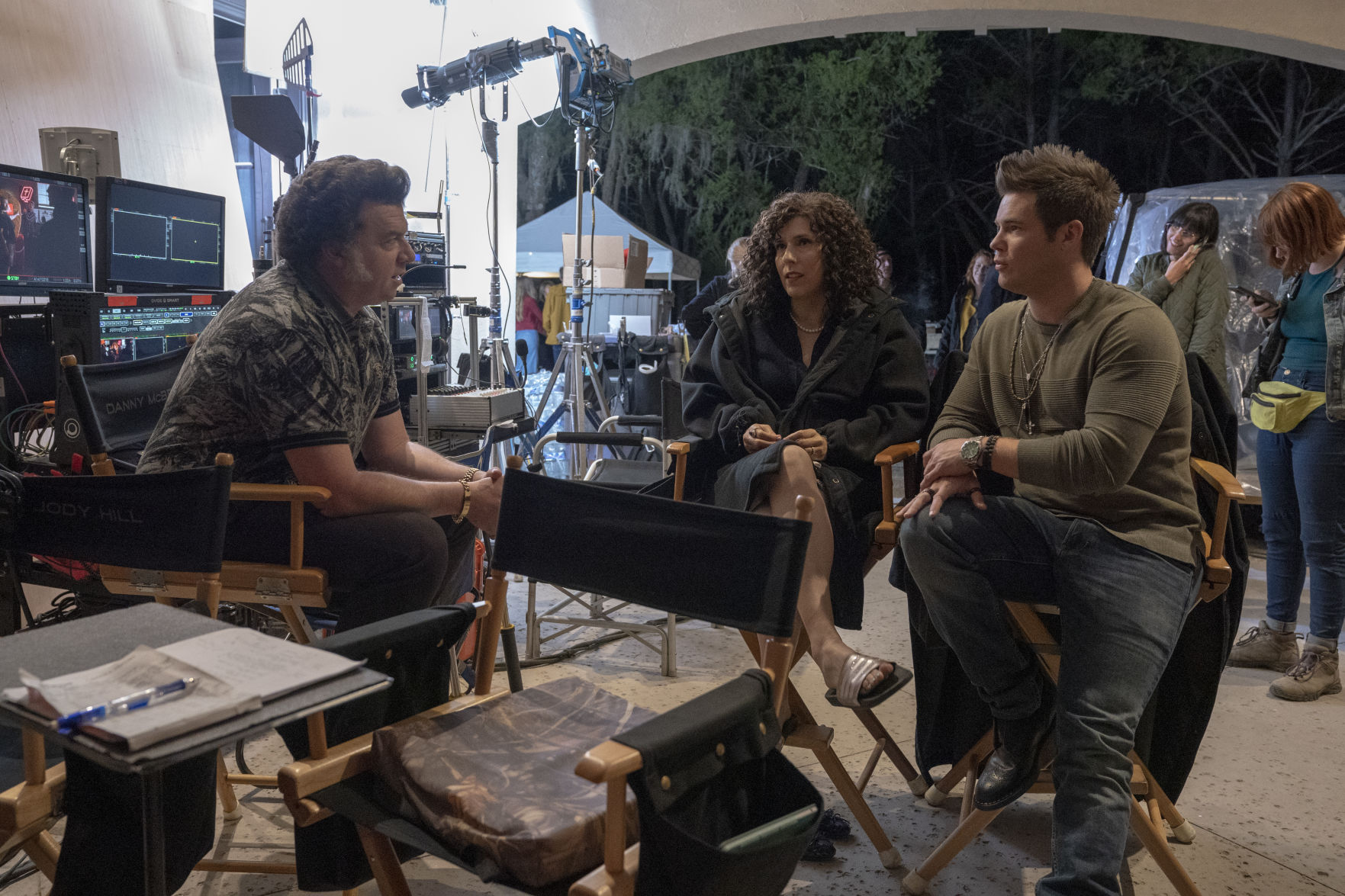
Joseph Ettinger: I usually start my day by just hitting play. You have your coffee and you have a little snack or something. You sit there and just start watching stuff.
Once my assistant editor has a scene ready for me, then you’re going through the scene. As you cut the scene together, you’re watching every line, every take, as you put those takes in. So you’re watching everything twice before you even put it in for the first time.
Justin Bourret: I was an assistant in the film days, so it’s a habit for me to watch all of the dailies. It’s a meditative process. I like doing it. I’ll even stop, rewind, take notes, pull selects. I spend a little bit more time watching dailies than other people do.
It’s a habit for me to watch all of the dailies. It’s a meditative process.
Dailies are also a nice record of how the day went. You can see what they started trying, if they kept with it or if they dropped something. It gives me a good idea of what everyone liked on set that day.
Todd Zelin: That’s a good indication of what to present. For first cuts, we obviously present the script, but it becomes so much more when the actors get hold of it.
It ends up becoming what the script is plus what we think is funny. It also becomes what they’ve been trying throughout the day. If the actors keep returning to an improv run on my first cut, I’m going to have a version of that improv run that’s funny and punchy. My cut will try to hit all the highlights of that run and see if it lands.

We might end up dropping that and going for another thing, or a simpler thing, or getting out of the scene at a different time. But I know they’re going to want to see at least a version of it integrated into the scene, because they tried it so many times. That’s generally how I approach the first cut of a scene.
MF: Can you use something like ScriptSync to try and manage all that stuff and work through those scenes?
Dave Canseco: All these scenes are ScriptSynced. We wouldn’t be able to cut the show without it. It would just be impossible.
Joseph Ettinger: I learned how to edit on ScriptSync. I’ve never even tried without it. When I was younger and didn’t have access to an assistant editor, I guess maybe I did. But as a professional in TV, I live by ScriptSync. It makes everything so much easier. Looking at every take of every line as I’m cutting a scene is almost impossible without it.
Dave Canseco: It’s like a map for us, especially with the comedy, finding where the improv was and where it fits in into the scene. It’s such an important tool.
Todd Zelin: Our assistants also mark up all the scripts with the improv moments. If there’s a one-off, they’ll write out the line of dialogue and put the marker in there so we know, “Okay, I want to try something with that.” Then I know where they said that one funny, off-the-cuff thing. I can get to it really quickly. Then they’ll list other improv beats. They’ll say, “These are all the attempts at beat A, beat B, beat C.”
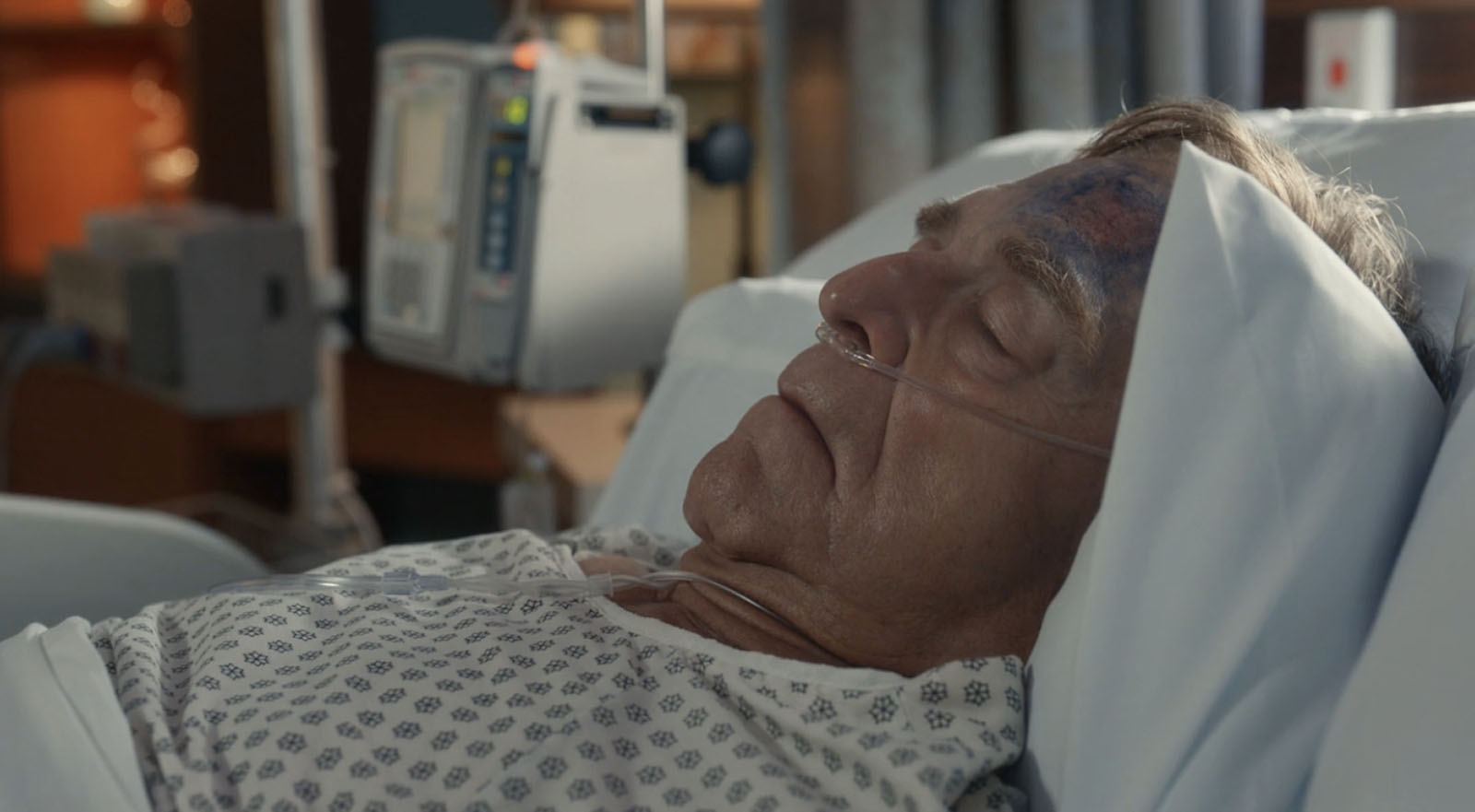
Justin Bourret: Because these scenes can be quite extensive, it may take a while for the script to be done. So, I’ll go back to the notes I made watching dailies. Usually there are key moments that I know I want to use, so I may sketch something out and then use ScriptSync to fill in the holes.
I’ve cut scenes without ScriptSync, but it comes in really handy when we start working with the directors and Danny. If he wants to try something, I can immediately find it. “Oh, I want a different reading on that.” “Like this?” You can immediately bring it up.
Joseph Ettinger: Also, because of the block shooting, you may have done that cut of the scene months ago. No matter how intimate you got with that footage when it came in, you’re really going to struggle to click right where you need to on the footage, unless you have a really sharp memory. Being able to jump back into something also helps with the TV and film schedules. “Oh, right, this is over here.”
MF: Speaking of getting intimate with the footage… I wasn’t exactly sure how I was going to bring this up.
Dave Canseco: We know exactly where you’re going. We know it!
Todd Zelin: Somehow, I know exactly what’s coming. That… wasn’t a good choice of words.
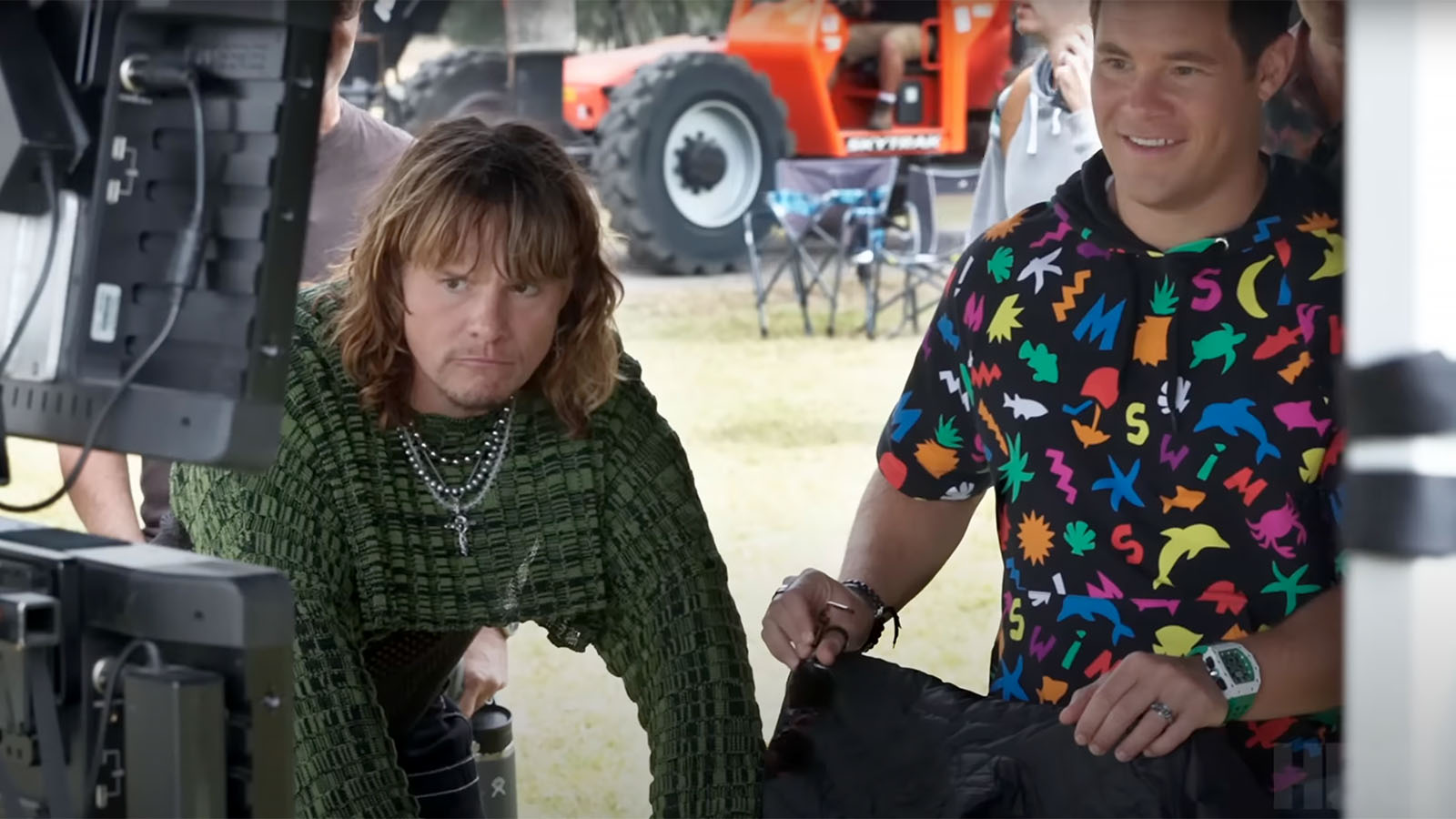
MF: I haven’t seen so much full-frontal male nudity since gym class. On one hand, I think it’s great to level the playing field. For years, actresses have been exploited in that way on shows and films. But to this extent that you do this, it feels like there’s a mission behind it. There is a point you’re trying to make.
Todd Zelin: Normalize male nudity.
MF: Normalize male nudity. Or abnormalize it. One or the other.
Justin Bourret: If they shoot a penis, I’m putting it in. That’s my go-to.
Joseph Ettinger: They want it in there.
Dave Canseco: Yeah, they do.
Joseph Ettinger: They put the work in.
Dave Canseco: I had to cut an editor’s reel. My agent had me cut an editor’s reel together and she said, “There’s so many dicks in this.”
Justin Bourret: I think in season one, we had one in almost every episode. In fact, someone said, “Not in Interlude!” and I went, “No, I put a horse penis in. That counts.”But I do think there is a normalization that I like about it. But I also think it’s funny!
Todd Zelin: Yeah, it’s just funny. A naked dude is funny.
Joseph Ettinger: There’s an absurdist line that the show walks with everything and it never tries to go too far over that line. I think the shock value helps with that tone. The wildness and unpredictability of the tone helps you lean into that.
There’s an absurdist line that the show walks with everything and it never tries to go too far over that line.
Todd Zelin: The tone really adds to the anything-can-happen vibe that the show has. We’re going to push boundaries everywhere we can, but also make you laugh while telling you a great story along the way.
Justin Bourret: Sometimes there’s logic as well. During the naked fight, it would have been ridiculous for him to say, “Hold on, let me put on my clothes.”
MF: Do you each have a bin set aside for those shots?
Justin Bourret: Joseph?
Joseph Ettinger: John Watson, who’s the director of that episode, did an excellent job with that scene. He understood exactly what it needed to be. He gave me a really excellent roadmap to follow.
Todd Zelin: Then we all sat in Joseph’s bay, watching every frame of that fight.
Dave Canseco: It’s the hardest I have laughed at anything on any show I’ve ever worked on.
Joseph Ettinger: I grabbed everyone that morning. I said, “Everyone’s got to see these dailies. This is just insane. I don’t know what’s going to end up in the cut. We all have to see the dailies before I put this together, because it’s just so insane.”
Justin Bourret: Melissa, Angela, Hailey…
Dave Canseco: People from other departments ended up coming down because they were laughing so hard.
Joseph Ettinger: It was a spectacle, but it came together and it works really well because it was on-story. I think it worked so well in BJ’s arc. BJ is so vulnerable at that moment, and he still gets overpowered. Then, BJ takes a dark turn. I think they employed it really deftly, as funny as that is to say. “That was really deft execution on the dick.” It works in the context of the story really well.
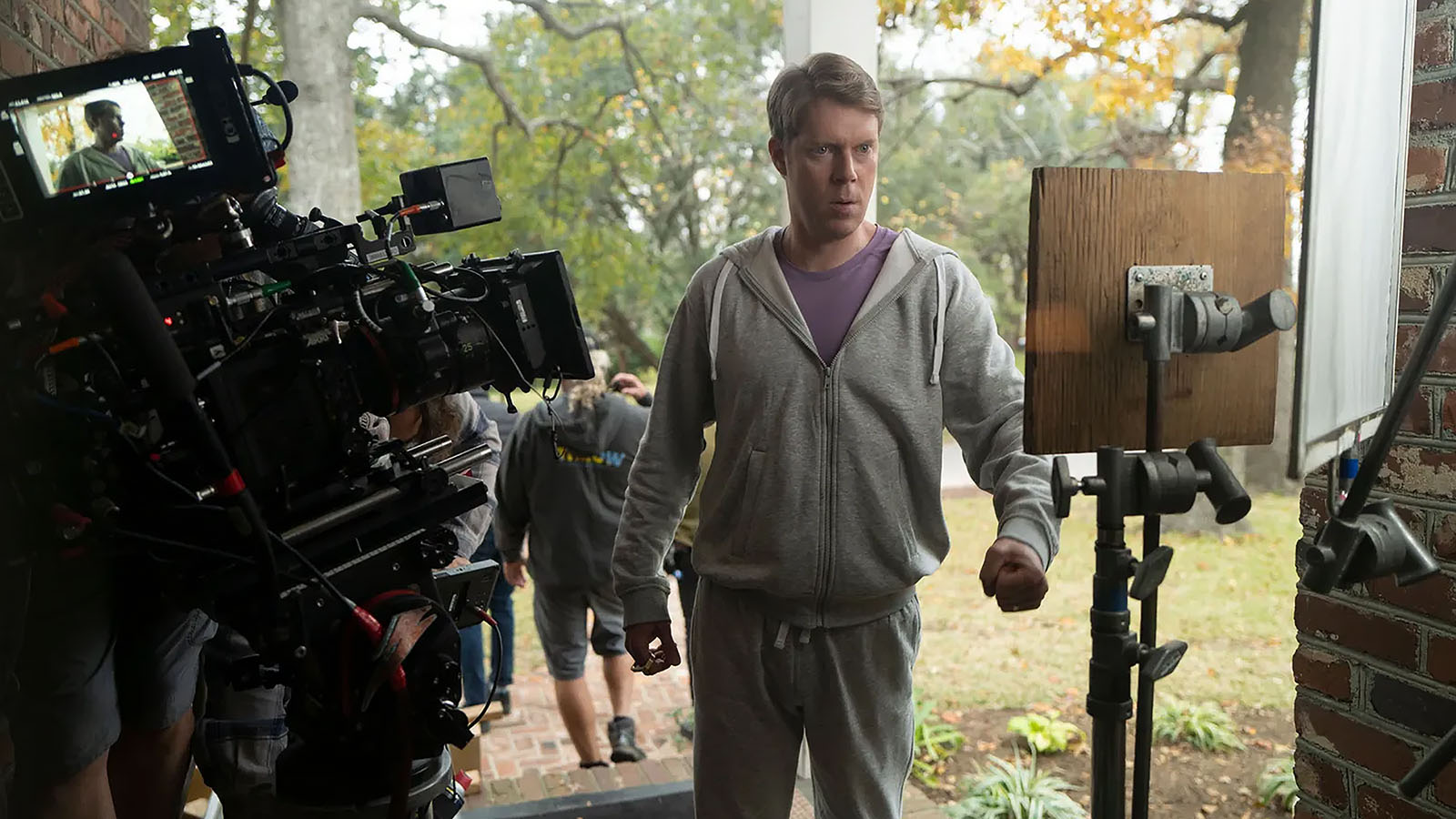
Justin Bourret: While we were talking about tone, one of my favorite moments is when BJ realizes what he’s done. It’s no longer funny, except maybe the look of the little girls.
But it is tragic. I remember the first cut. I said, “Do not change that cut.” It was a cut from naked Stephen (played by Stephen Schneider) to Judy waiting at dinner. You have this devastating thing and then suddenly it’s kind-of funny.
MF: Sorry, I need to compose myself. As long as we’re talking about John Watson… Other than the Gemstone kids, you have another holy triumvirate on the show. Danny McBride, Jody Hill, and David Gordon Green share producing and directing duties.

In fact, every episode, with the exception of the one we’re talking about, was directed by them. This one, of course, was directed by Jonathan Watson. When you’re working with a director who is new to the series, is it business-as-usual for an editor? Or are there things that you need to be thinking about and helping with?
Joseph Ettinger: I think you’re always trying to keep an eye on stuff. It was harder for me because I was also new to the show. But Jonathan Watson is an industry vet and he planned out everything very meticulously.
We had a few early conversations about the early scenes. I said, “Let’s talk through how you want to put this together” and we had a couple of conversations to get to know each other. By the end of the season, I loved getting his dailies.
I think he got so dialed-in and planned so well. You love that as an editor, when you get a director that’s meticulous in that way. When you get the dailies, you think, “Okay, there’s logic here.” When you work with a new director, you hope they’re like that.
You love that as an editor, when you get a director that’s meticulous in that way.
Justin Bourret: Jonathan Watson has been with Danny and the Rough House gang for years, so he knows their sense of style. He came on as a co-executive producer of season two and he did a lot of second unit directing.
A lot of the cool motorcycle sequences, including that amazing shot of Gideon (played by Skyler Gisondo) lifting his legs up on that jump, was directed by Watson. He was already shooting for the show during season two, so I think Danny knew that he would knock it out of the park, and he did.
MF: If I’m going to ask about working with John Watson, I should ask about Danny McBride. He’s a showrunner, a writer, a director, and a star of the show.
Does wearing all those different hats make it more efficient in post? Or is it a challenge, because he’s being pulled in so many different directions?
Justin Bourret: I would say more efficient.
Dave Canseco: Once we’re in post, Danny takes control. This is really his show from beginning to end. He’s so dialed in to what he wants. It’s about finding the show in the footage and putting it together.
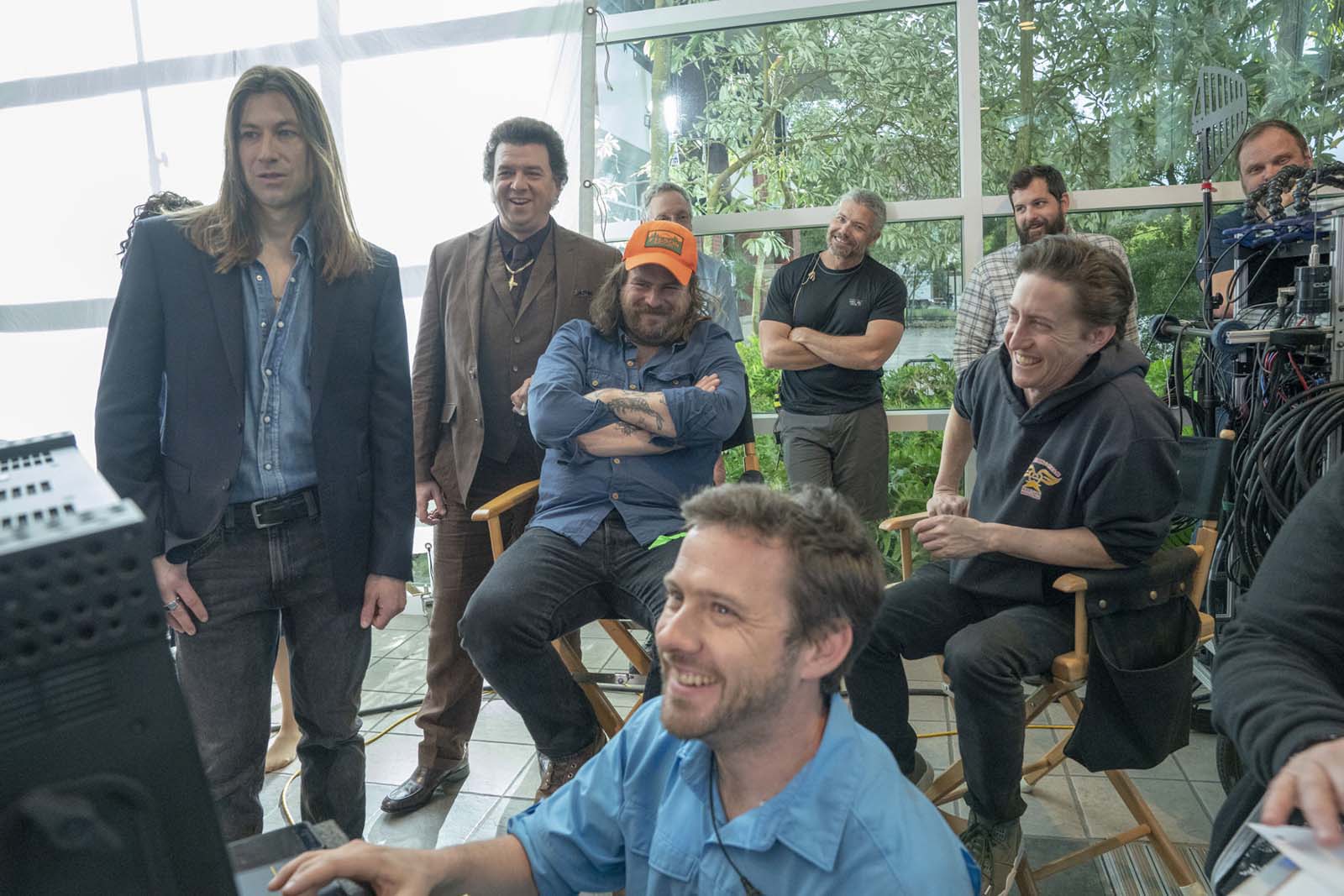
Justin Bourret: They have an amazing writing team. John Carcieri, Jeff Fradley and Edi Patterson, all of them.
But at the end of the day, Danny created the show. He wrote the pilot. Todd always says he’s the hardest working guy in show business, and he is. He gets pulled in a bunch of different directions, but it comes to our benefit in post because he knows where all the bodies are buried and he knows what he wants.
He’s very clear on what he wants. That’s very helpful for an editor, to have someone who’s in charge, who knows what show that they’re making, and to know that you’re on the same page with them.
He’s very clear on what he wants. That’s very helpful for an editor.
Then, when he directs, it’s great because you’re getting footage from the director who created the show. If he does something several times, I think, “Danny is directing this. I know he’s going to want it. It’s pretty evident.”
MF: You guys seem to work pretty well together, whether you’re on location or if somebody’s hybrid or remote. It seems like a very collaborative environment. Have you been able to learn any techniques from your co-editors?
Dave Canseco: I learned so much from these guys because I assisted Todd and Justin and Craig Hayes, who was on seasons one and two. I learned from these guys while they were cutting Gemstones.
In terms of techniques, it’s really just ideas. There’s a transition in episode eight where we go from BJ in the bathtub to lotion “enhance”, and that was Todd. Todd just said, “Throw that together, it’ll win.”
Joseph Ettinger: Todd’s great for those. Todd loves a disgusting transition.
MF: It’s good to be known for something, Todd.
Todd Zelin: Exactly. I live for them. They’re my bread and butter. My mother’s so proud.
Joseph Ettinger: I always come into a project with the idea to learn nothing, if possible.
One of the joys of being a professional artist is that there’s no ceiling.
No. One of the joys of being a professional artist is that there’s no ceiling. The goal isn’t to be perfect. The goal is to learn something every time and to get better and to hone your craft.
I love that. I love that there’s no ceiling, because it’s exciting to me. I can go into every single project and always get something out of it. I got a ton out of this project, partially because it’s collaborative.
I received so many different ideas on my cuts that I wouldn’t have thought about. I can internalize that and take it onto that next project and think, “How can I grow and learn from other people?” You’re just never going to have every possible answer to every question. The more brains you have, the better, and the more you can learn.
Justin Bourret: It’s one of the reasons why I wanted to have all the editors in the room when we screen footage. If we can do it, I want everybody in our post department in the room, too. I want the story to be the best it can be. I don’t care where the idea comes from. I’ve heard a lot of editors say this, and I agree. We’re all trying to do the same thing. It’s a job at the end of the day, and we’re trying to make the best product possible.
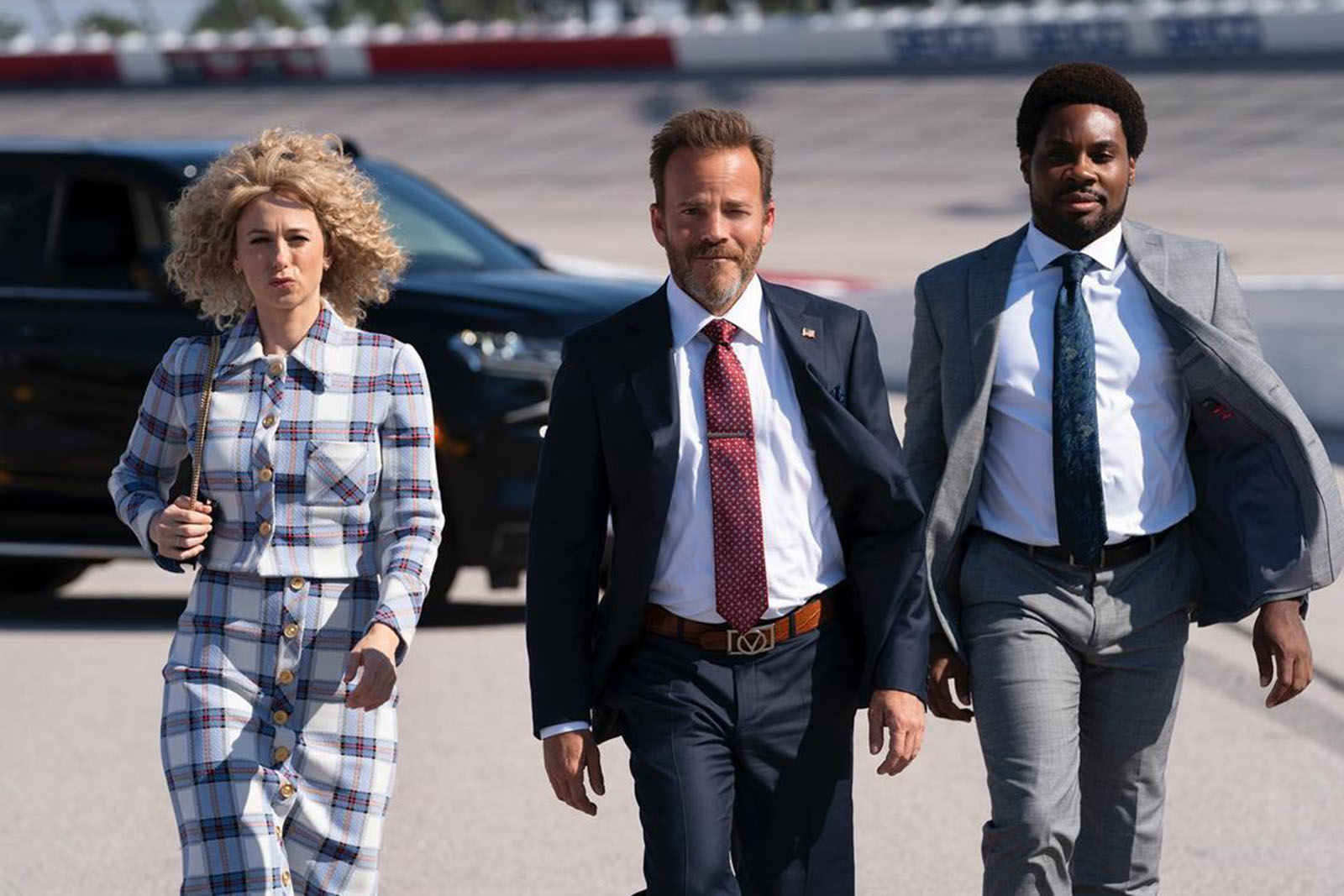
In terms of learning, I learned from these guys as well. If there’s ever a day where I’m not learning something new, I need to pack it in. You should always be learning something new. You should always be growing. That’s one of the exciting things about our business.
Joseph Ettinger: What Justin just said is so important. You should bring people into the room, because access and understanding is one of the hardest aspects of this industry when it comes to moving up. Getting a PA in the room and having them see the process is so important, even if they’re too shy or overwhelmed at first to give notes.
Inviting people into the process is a huge part of helping the next generation.
You can’t imagine they want to stay a PA forever. They probably want to be an editor or a writer or whatever. Inviting people into the process is a huge part of helping the next generation develop and learn skills.
Todd Zelin: I didn’t go to film school, so I don’t have a deep background in film theory or anything.
I’ve been with these guys since I assisted on the fourth season of Eastbound. That was one of the first scripted shows I got onto. Before that, I was a reality TV editor. I learned through the process of working with the guys from Rough House, through working with Justin and all the other editors along the way. I feel like I went to film school through them. I’ve learned so much over the six seasons of TV that I’ve made with these guys. It’s been an insane learning experience.
MF: Since I’m prone to asking offbeat questions, I’m tempted to ask which of the Gemstone siblings you each identify with the most.
Todd Zelin: I’m BJ.
Dave Canseco: You say you’re BJ, but you’re Judy. Let’s be honest here.
MF: One of my favorite things about the show is Baby Billy and his take on Family Feud for the Bible, Baby Billy’s Bible Bonkers.
Todd Zelin: Roll that around your mouth.
MF: I don’t think I could. So, after all your time on Gemstones, if the post crew were to compete on that show, how do you think they would do?
Todd Zelin: Bible questions? Really badly.
Dave Canseco: Very badly.
Joseph Ettinger: It would be zero to zero to zero.
MF: Well, as long as you do better than the grips.

